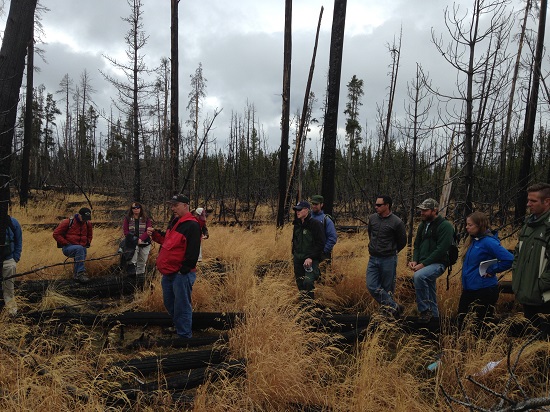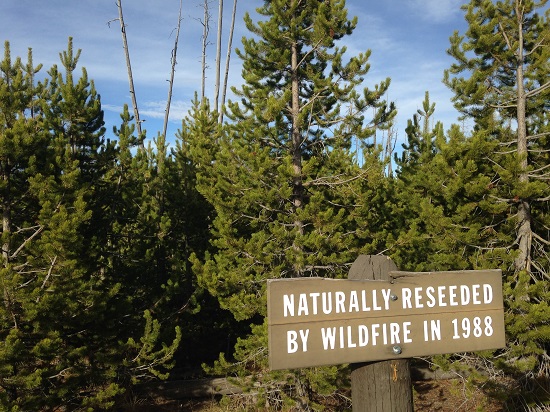This event was designed to create dialogue among scientists and managers and to put fire ecology research in the context of real-life limitations and situations that influence decision making and planning. Discussion topics included: Fire history • Fire regime differences across soil, forest, and fuel types • Recovery after fire • Factors influencing different post-fire trajectories • Future fire projections • Possible ecological and management consequences related to future fire predictions • Sensitivity and complacency of fire regimes in response to climate
Subject-matter expert participants included:
Roy Renkin, Acting Chief, Vegetation and Resource Operations, Yellowstone National Park (YNP)
Ann Rodman, Branch Chief, Physical Science, YNP
Todd Opperman, Deputy FMO, YNP
Becky Smith, Fire Ecologist, YNP
Bill Mayer, Fuels Specialist, YNP
Diane Abendroth, Fire Ecologist, Teton Interagency Fire
Tom Olliff, Coordinator, Great Northern Landscape Cooperative
Mary Taber, Fire Ecologist, University of Idaho/Wildland Fire Management RD&A
Julie Shea, Fire / Fuels Planner, Custer Gallatin National Forest
Jon White, Fuels AFMO, Caribou-Targhee National Forest
Travis Belote, Research Ecologist, The Wilderness Society

Resources
An abundance of materials (see Related Documents) were referenced and discussed during this field tour, related to:
- Background and overview of the Yellowstone fires of 1988
- Paleo-fire and climate of Yellowstone
- Lodgepole pine serotiny & implications for postfire regeneration
- Postfire succession and forest stand development
- Postfire aspen seedling recruitment
- Fire and bark beetles
- Future climate and fire predictions
- Continued learning from the Yellowstone fires of 1988 (and see the news article "What Yellowstone's '88 fires tell us about Glacier")
